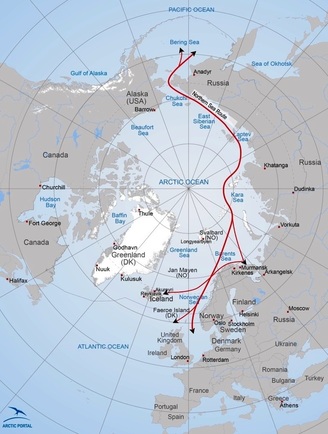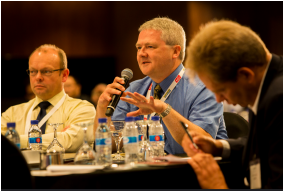|
The Finnish government has appointed former PM, Paavo Lipponen, and ex-FiCom MD, Reijo Svento, to explore the prerequisites for international cooperation in launching a cable-laying project in the North-East Passage. Figure 2 - North-East Passage Map Source: http://portlets.arcticportal.org/northeast-passage
Lipponen and Svento, commissioned by Finland’s Ministry of Transport and Communications, are tasked with clarifying the extent of interest in the North-East Passage cable project, which would involve construction of a new high-capacity optical fibre cable via the North-East Passage between Asia and Europe, from countries bordering the route. “The Government has a strong intent to develop the Arctic region, and the submarine cable across the North-East Passage would open up major business opportunities,” said Anne Berner, Finland’s Minister of Transport and Communications. The submarine cable connection would be the fastest physical telecommunications route from Asia to Northern and Central Europe. The route from the Arctic Ocean to the Baltic Sea could travel via Norway or Russia, but a route via Finland would be the shortest option. The cable would bring not only speed but also respond to the rapidly increasing capacity needs. “The materialization of the extensive and multinational cable project would require international commitment from at least Russia, China, Japan, South Korea, Norway, certain EU countries and the United States. In addition, the European Union could have a significant role in this international cable project both as a beneficiary and provider of funding,” added a government statement. Lipponen and Svento start their roles on May 2 2016 and their terms last until October 31 2016. An interim report must be submitted this coming August. Source: Capacity Media ANALYSIS: There has been much excitement at the possibility that global warming will open up the North-East Passage to shipping, cutting weeks and possibly millions of dollars off the cost of transporting goods between Asia and Europe. According to World Affairs Journal, the number of ships making this voyage peaked in 2013 at 71 and then fell in 2014 to 53 as economic sanctions on Russia over its invasion of Crimea, Ukraine took effect. These numbers compare with some 17,000 vessels traversing the Suez Canal every year. The thinning of the ice has also led to submarine fiber optic cable initiatives through the Arctic Ocean. Russian-led ROTACS (Russian Optical Trans Arctic Submarine Cable System) is a second attempt to develop this route after its predecessor, "Polarnet", failed to gain traction but ROTACS appears to have suffered the same fate, perhaps because the Russians are difficult to partner with. Fresh from its success in building and commissioning in record time the Baltic "C-Lion" submarine cable system between Helsinki, Finland and Rostock , Germany, Finnish government-owned Cinia is at the forefront of this latest initiative to finally lay a cable along the North-East Passage. However, the Finns have immediately identified the key challenge to such a project. Many question whether the project is technically feasible but this question is irrelevant if the co-operation of Russia is absent. At a time when Russia is becoming increasingly isolated in the World, the Putin regime may see political advantage in co-operating with the Finns to build a new Asia-Europe route which would undoubtedly be irresistible for major carriers and content providers. Such a cable would also be of great interest to the Russian Military. The Finns have a long history of collaborating with the Russians so, if anyone can make this project work, the Finns are probably best-placed to make it happen. However, the Russians are renowned for shooting themselves in the foot and cutting their nose off to spite their face so nothing is certain. The report by Lipponen and Svento will undoubtedly come with a positive recommendation to move forward and open discussions with the Russians. The next major challenge will be to arrange the significant financial support which will be required to make this project viable. The accepted wisdom is that this project cannot be funded without government support but, given the right guarantees of security and exclusivity, a content provider could also step up.
0 Comments
Leave a Reply. |
Julian Rawle, AuthorThought leadership articles and commentary on developments related to the subsea fibre optic cable industry can be found here. Archives
February 2018
Categories |




 RSS Feed
RSS Feed